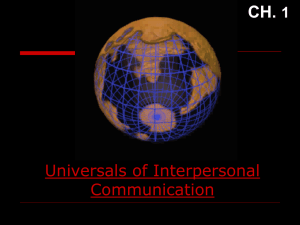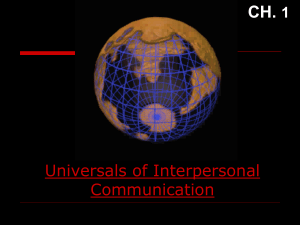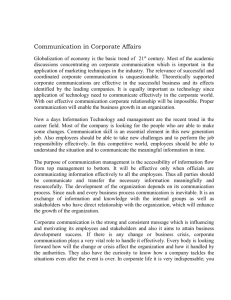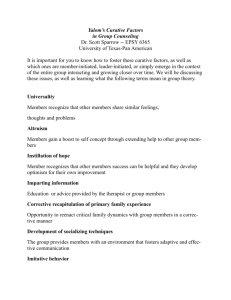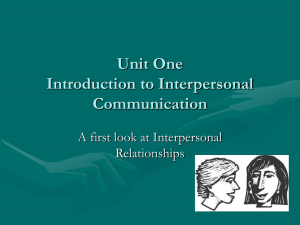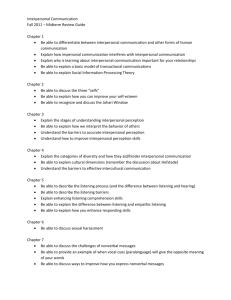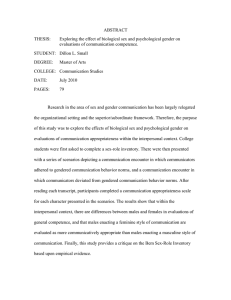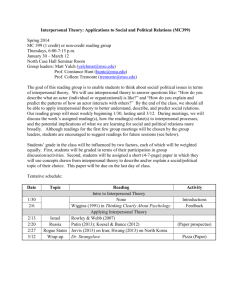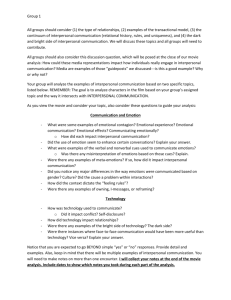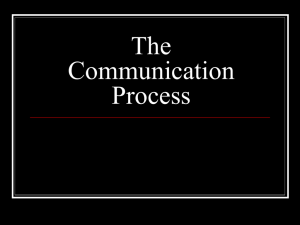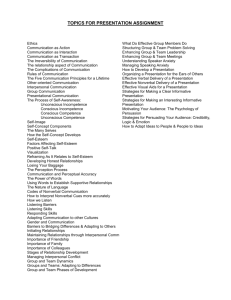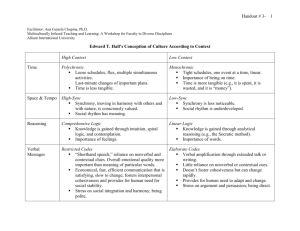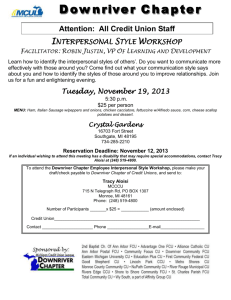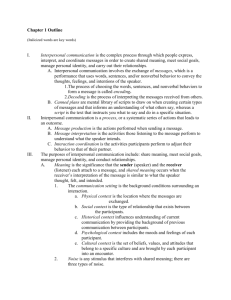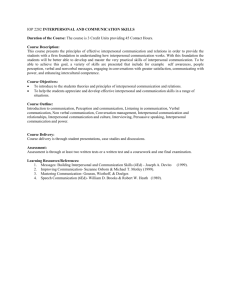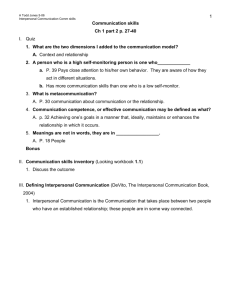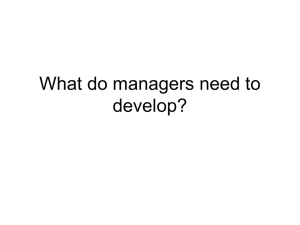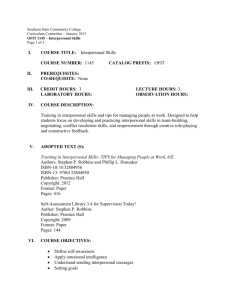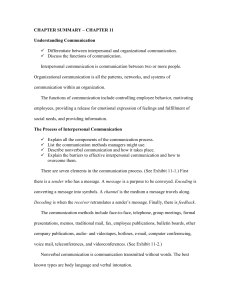Effective communication is a critical skill. Transmitting information
advertisement
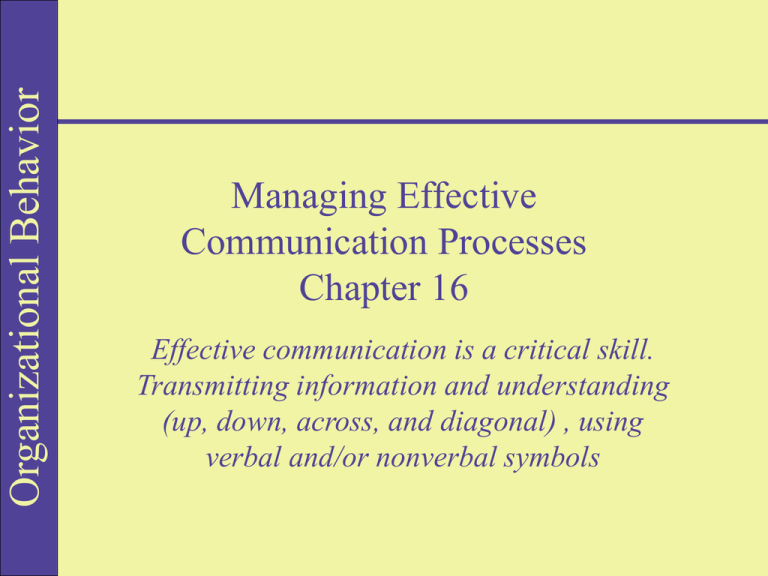
Organizational Behavior Managing Effective Communication Processes Chapter 16 Effective communication is a critical skill. Transmitting information and understanding (up, down, across, and diagonal) , using verbal and/or nonverbal symbols Organizational Behavior The Communication Process Communicator Message Medium Feedback Receiver Organizational Behavior Contemporary Model • Research by Shannon and Weaver, and Schramm. – – – – – – – Communicator Encoding Message Medium Decoding / Receiver Feedback Noise Organizational Behavior Nonverbal Messages • Messages sent with body posture, facial expressions, and hand and eye movements. It has important impact on communication. Organizational Behavior Organizational Communication • Directions of communication – – – – Downward communication Upward communication Horizontal communication Diagonal communication • Grapevines – Rumors: Pipe Dreams, Bogie rumor, Wedge drivers, Home-stretchers Organizational Behavior Interpersonal Communication • Interpersonal style – how an individual prefers to relate to others. • Johari Window – four combinations of information known and unknown by the self and others – – – – Arena Blind Spot Façade Unknown Organizational Behavior Interpersonal Strategies • Johari Window: – Exposure – increasing the Arena by reducing the façade area requires that the individual be open and honest in sharing information with others. “Telling it like it is” often involves risk. – Feedback – When the self doesn’t know or understand, more effective communications can be developed through feedback from those who do know. Depends on the person’s willingness to hear feedback and on others willingness to give it Organizational Behavior Managerial Styles • Managers provide information (which must be understood), they give commands and instructions (which must be obeyed and learned), and they make efforts to influence and persuade (which must be accepted and acted on). – Type A: autocratic leaders; aloof and cold; poor interpersonal communicators – Type B: Seek good relations with subs but are unable to openly express feelings; often ineffective interpersonal communicators – Type C: Interested in only their own ideas; usually not effective communicators – Type D: Feel free to express feelings and have others express feelings; most effective interpersonal communicators Organizational Behavior Barriers to Communication • • • • • • Figure 16.4 & 16.5 Frame of reference Selective listening Value Judgments Source Credibility Semantic problems • • • • • • Filtering Ingroup Language Status Differences Proxemic Behavior Time Pressures Communication Overload Organizational Behavior Improving Communication in Organizations • • • • • • • • • Following Up Regulating information flow Utilizing feedback Empathy Repetition Encouraging mutual trust Effective timing Simplifying language Effective listening Figure 16.6

